Bvlgari's celebration of the Serpenti snakes its way from Tokyo to Shanghai, Seoul and Mumbai
Roman high jeweller Bvlgari marks the Year of the Snake with the sensual Serpenti Infinito exhibition
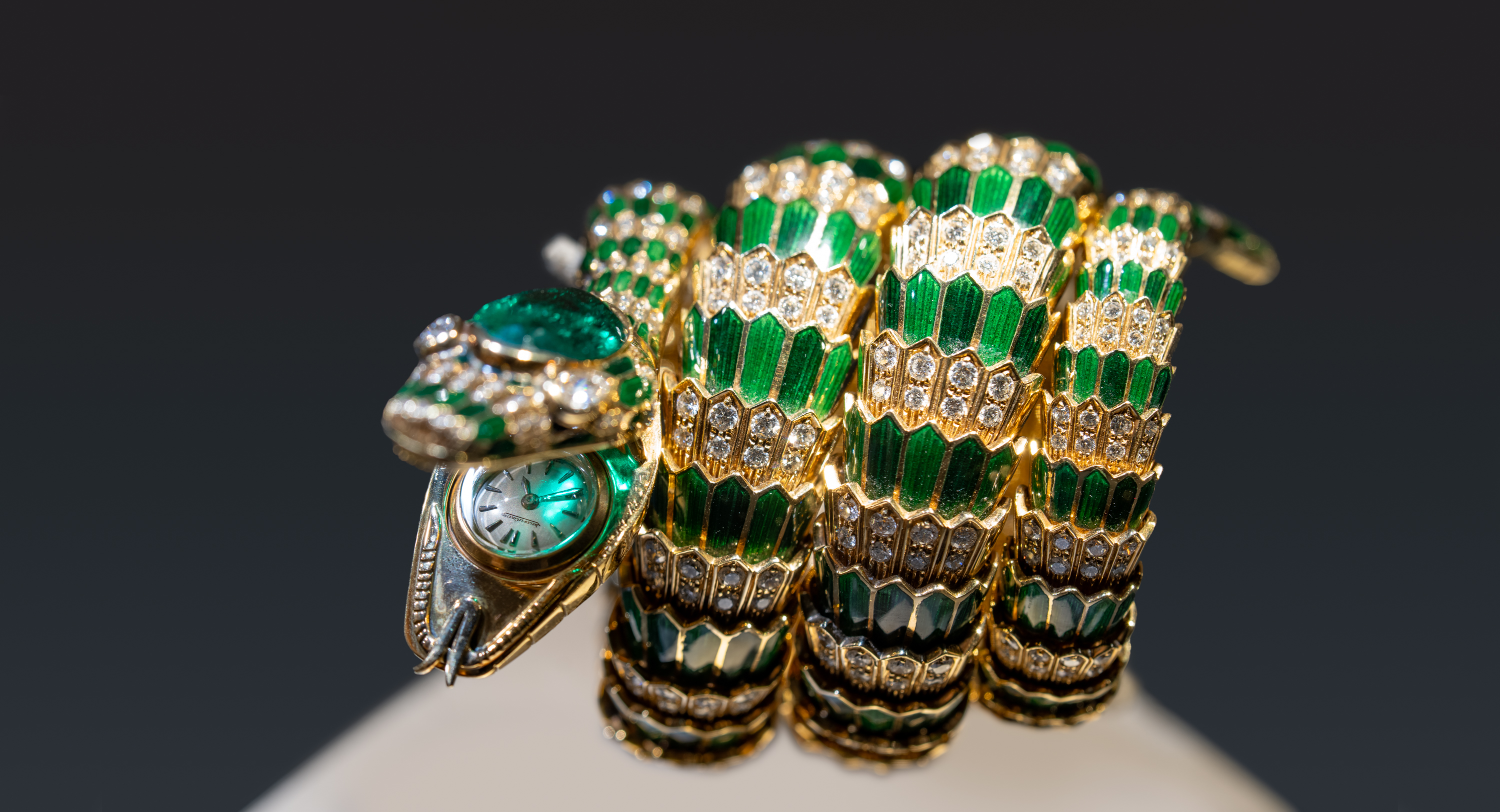
At the Art House in Mumbai’s Nita Mukesh Ambani Cultural Centre, the serpent lingered everywhere, in metal, myth, and light, as Serpenti Infinito opened its doors. Bvlgari’s first large-scale cultural exhibition in India is the third chapter in a global journey that has wound its way from Shanghai and Seoul to Mumbai.
Curated by Nature Morte and envisioned by Sean Anderson, the exhibition gathered twenty-three Indian and international artists to reimagine the nāga (the serpent) as a living cosmology. Anderson’s curatorial intelligence shaped the show as a living archive, a conversation that never concludes. His approach insisted on exchange: art speaking with art, artists with viewers, myth with material. Nothing in Serpenti Infinito was still. Its structure pulsed with dialogue; labour, indigeneity, and transformation intertwined like the serpent’s own body.
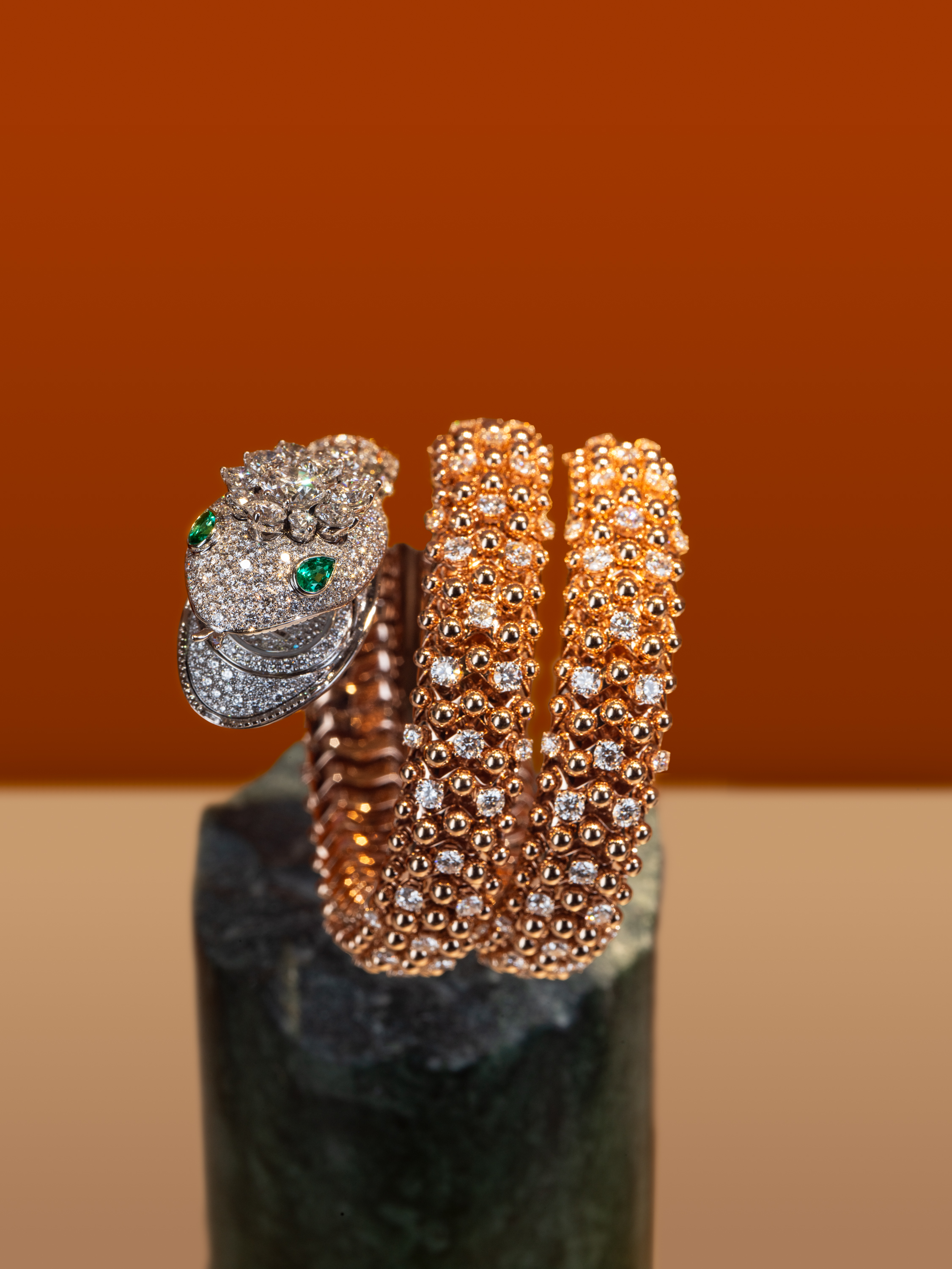
Serpenti Infinito revolves around cycles of creation, shedding, and renewal. Across three chapters - Crafting Serpents in History, A Mythic Presence, and Infinite Transformations - the exhibition traces how the serpent’s image and idea have coiled across millennia, carrying with it the wisdom of metamorphosis.
The lineage began in Rome. As Jean-Christophe Babin, Bvlgari’s CEO, reminded the audience, Rome is not simply where Bvlgari was founded, it is the maison’s first muse. 'Its architecture, grandeur, and colour gave us a boldness,' he says. 'Where others made luxury delicate, like the French, Rome made it monumental.' The contrast is telling. French minimalism prized subtlety and singularity: white diamonds, one metal, one line. Roman design, in Bvlgari’s hands, became an act of aesthetic fearlessness; coloured stones, voluptuous form, gold that gleams like sunlight on ruins.
It was Cleopatra, Babin recalled, who once wore a serpent-shaped bracelet upon her arrival in Rome, an object that was both ornament and proclamation, beauty turned into sovereignty. For Bvlgari, that myth endures. 'Like the snake shedding its skin,' Babin says, 'jewellery allows you to become another version of yourself, not someone else, but someone latent within you.'
If Rome birthed Bvlgari’s language of audacity, Asia now extends it. The year began in Shanghai with the 'Serpenti Infinito' exhibition, which paved the way for the current celebration in Tokyo (live until 15th December), Kaleidos: Colors, Cultures and Crafts at the National Art Center, a collaboration with SANAA and Formafantasma. Japan, with its deep aesthetic traditions of wabi-sabi, shibui, and restraint, offered a very different stage. SANAA’s translucent architecture turned colour into atmosphere, with light diffused through veils of glass and silk, where edges disappeared and hues breathed. Formafantasma’s interventions mapped gemstone tonality onto glass and resin, showing how colour itself could become an act of contemplation. Kaleidos embodied a Japanese ethos: beauty as balance, precision, and continuity. Restrained, embodying stability amid flux.
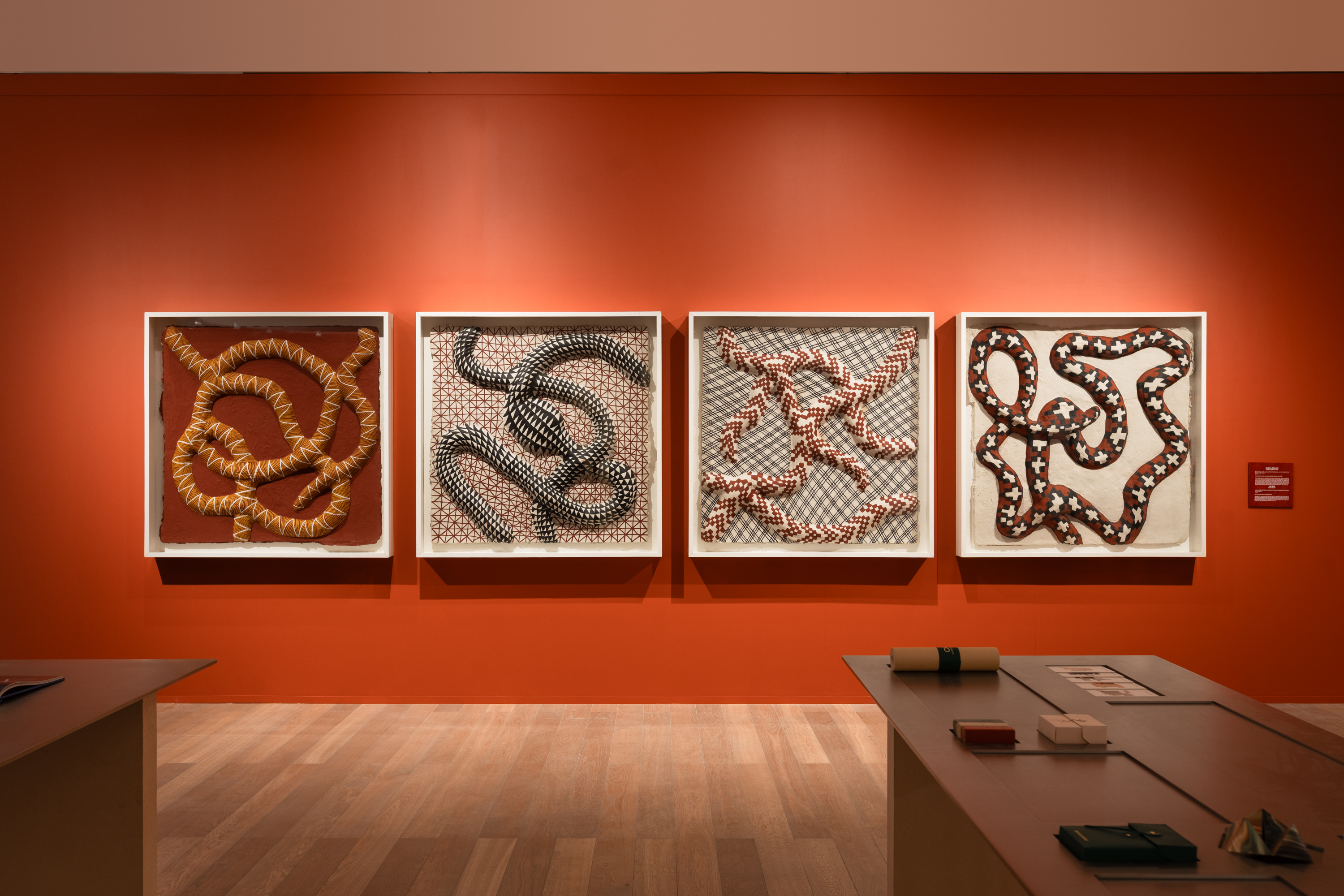
In Mumbai, that quiet chromatic poise transformed into mythic movement. Here, the serpent became the central metaphor; fluid yet grounded, forever in motion but anchored in essence.
Receive our daily digest of inspiration, escapism and design stories from around the world direct to your inbox.
Chapter I: Crafting Serpents in History opens with Bvlgari’s Tubogas watches of the 1940s and the five-coil Pallini bracelet of 1955, displayed alongside Indian manuscripts and ritual objects the Sapta Nadi Tantric Text, the Nag-yash Yantra, and Bhuta Theyyam breastplates. These artifacts, tracing the serpent as symbol of energy, water, and rebirth, revealed a shared belief between Roman artisans and Indian cosmologies, here ornament is a vessel of life force.
Nearby, R. Srinivasan and L. Rathakrishnan’s 108 Karanas of Natyashastra translated that life force into motion. Inspired by Shiva Nataraja, the god who dances the universe into being, the serpent a companion in rhythm. Shiva, the indigenous god of paradox, both masculine and feminine, protector and destroyer, dances with serpents coiled around his neck. His motion sustains the world, his stillness dissolves it. The serpent here is continuation, a symbol of boundless energy and metamorphosis.
Chapter II: A Mythic Presence wove the serpent’s afterlives through contemporary art. Bharti Kher’s Medusa, a resin-cast female figure cloaked in saris, her skin covered with hundreds of snake-shaped bindis, embodied the tension between fear and divinity, feminine and monstrous. Ritika Merchant’s triptych Zoomorph II, with Gaia encircled by a cosmic serpent, summoned a pre-rational knowing, a mythic intelligence that transcends comprehension. Padma Shri Baua Devi’s Bal Basant (2005), painted in the bharni style of Mithila, transformed the serpent into witness: a mediator of fertility, tenderness, and domesticity. Her eco-critical vocabulary framed the snake as kin, its presence a grammar of coexistence, in contrast to non-indigenous recognitions of the naga as a threat, worshipped with reverence laced with fear.
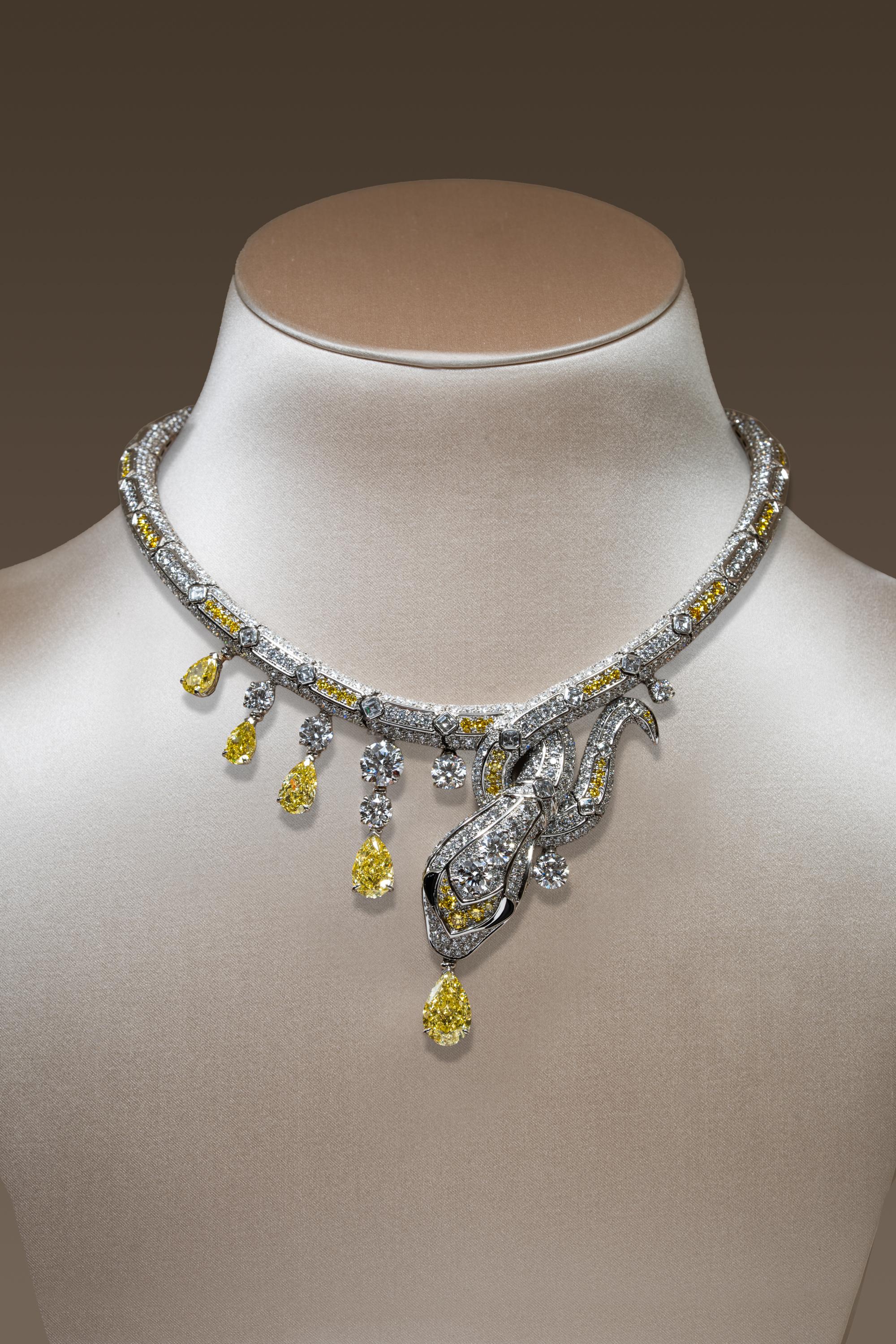
Chapter III: Infinite Transformations turned from myth to technology. Refik Anadol’s Infinito, a 360° mirrored chamber, immersed viewers in data-driven waves of serpentine light. Enter Projects’ Rattan Snake reimagined the serpent as woven architecture, rattan looping like breath, blurring craft and computation. Harshit Agrawal’s VR installation transformed the viewer into serpent, moving through digital terrain that mirrored both desire and decay. These works gestured toward the same truth: that the serpent, like technology, is forever reinventing its skin.
Even the jewellery echoed that rhythm. The Serpenti Maharani Secret Necklace, the Apsaras, Ananta Shesha, and Jaipur Mirage revealed craftsmanship as choreography: each link articulated by hand, each join invisible, every hidden surface as exquisite as what the world sees. Turned upside down, the jewels remained perfect. The side that touches skin is treated with equal reverence, embodying mechanics and precision in its joinery and making the tactility of the objects just as desirable as their splendour to the eye. Their modular forms - heads detaching, coils reshaping - captured metamorphosis in material form.
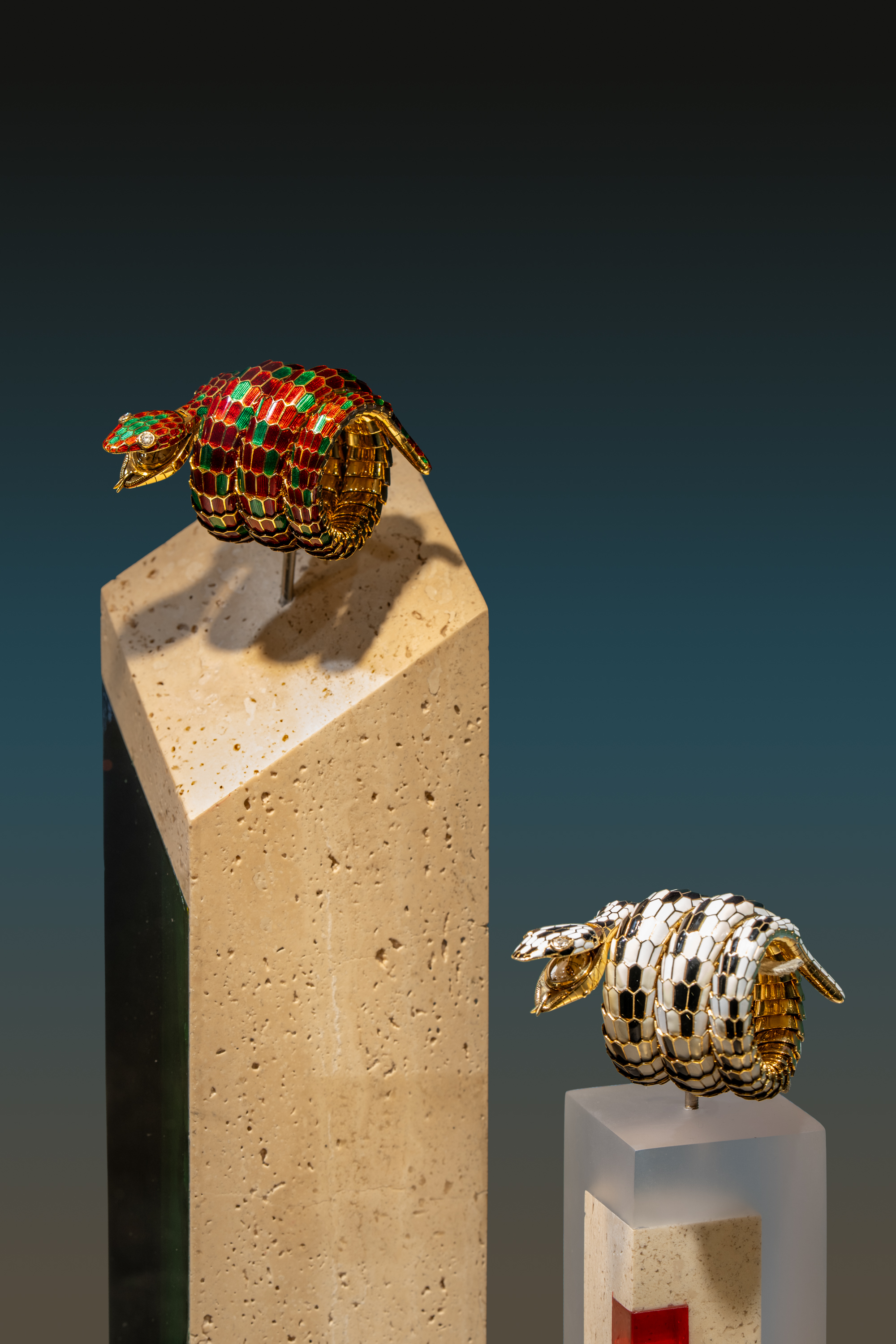
Priyanka Chopra Jonas, who inaugurated the exhibition, calls Bvlgari 'provocative.' To provoke, for Bvlgari, is to awaken and to unsettle the smoothness of luxury.
Between Tokyo and Mumbai, between colour and serpent, Bvlgari staged a cultural experiment: to treat beauty as cosmology rather than commodity. SANAA’s translucent restraint and Anderson’s sensorial density may seem worlds apart, yet both articulate the same intuition - that beauty, at its boldest, thinks.
As I left Infinito, reflections multiplied endlessly; light, metal, body, serpent, each fragment looping back into another. In that mirrored continuum, Bvlgari’s world is no longer spectacle, but system, an argument for transformation as our most ancient, and most modern, instinct.
Aastha D. (she/they) is an independent scholar, essayist, and educator. They have degrees in architecture and its critical, curatorial, and conceptual practices. She founded the magazine Proseterity, and is also managing editor of the working group Insurgent Domesticities at the Center for the Study of Social Difference (CSSD) of Columbia University
-
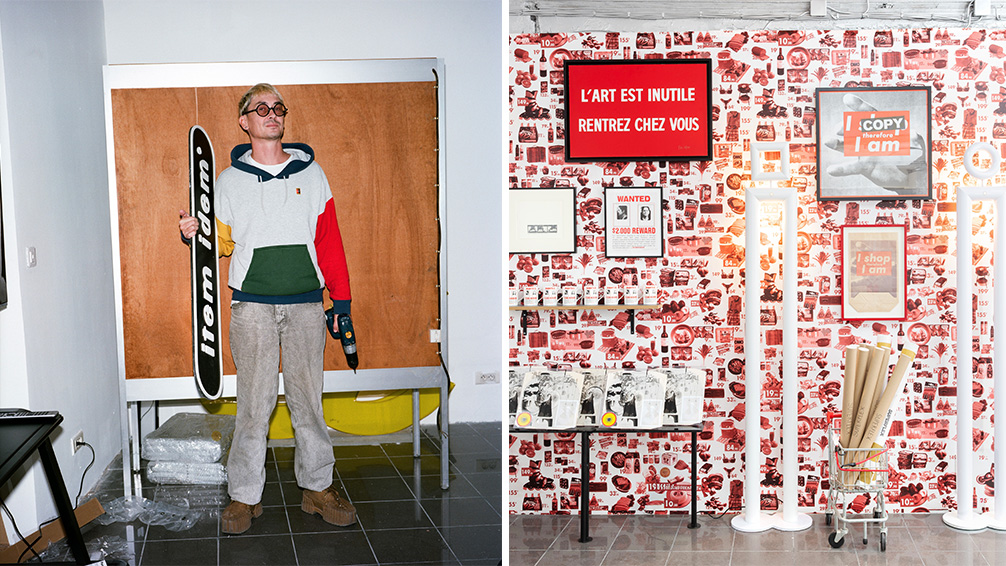 Is this Paris' most design-focused holiday shop?
Is this Paris' most design-focused holiday shop?Shop weird and wonderful design and fashion at this playful, postmodern exhibition from Item Idem, where commerce, culture and humour intersect
-
 Modernist Scotland explores the country’s impressive legacy of contemporary architecture
Modernist Scotland explores the country’s impressive legacy of contemporary architectureA new book, Modernist Scotland, delves into the art and ambitions of the International Style in post-war Scotland, presenting 150 projects that typify an age of optimism and innovation.
-
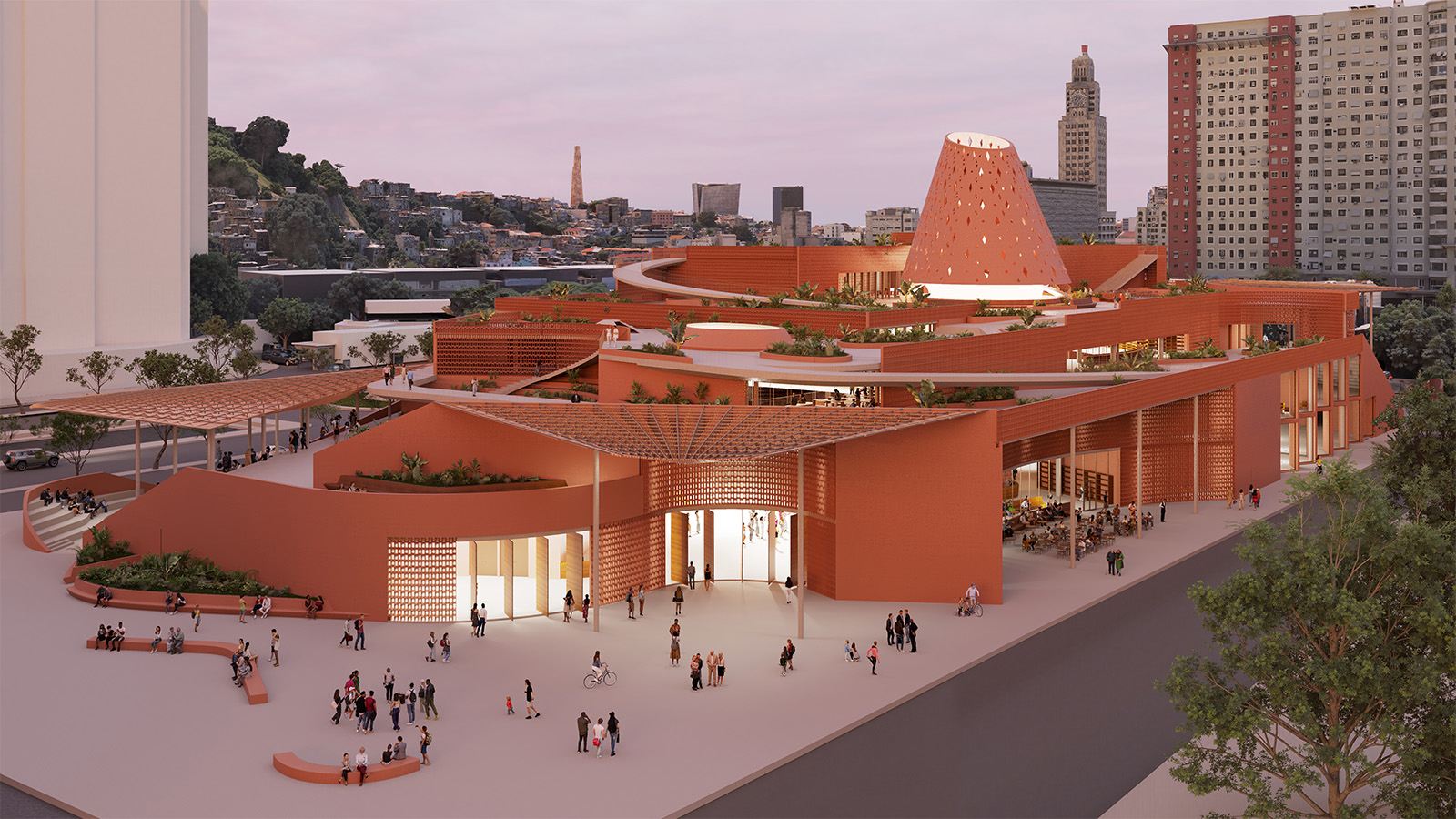 An exclusive look at Francis Kéré’s new library in Rio de Janeiro, the architect’s first project in South America
An exclusive look at Francis Kéré’s new library in Rio de Janeiro, the architect’s first project in South AmericaBiblioteca dos Saberes (The House of Wisdom) by Kéré Architecture is inspired by the 'tree of knowledge', and acts as a meeting point for different communities